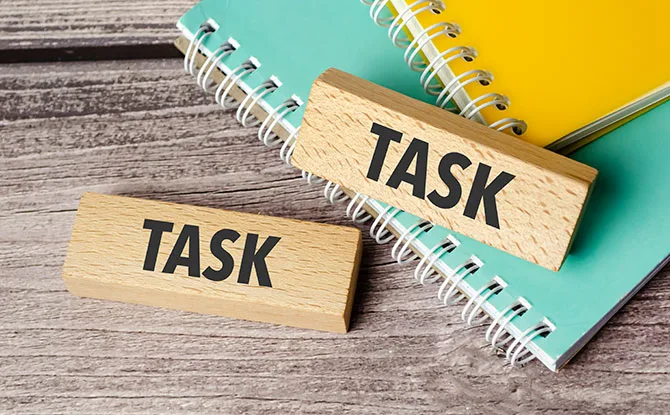Task-oriented employees are highly focused individuals who are driven to achieve specific goals. While this can make them excellent performers, it can also present unique challenges when it comes to motivating them. To ensure that these employees remain engaged and productive, it is critical to implement effective strategies to motivate task-oriented employees and cater to their unique strengths and preferences.
In this section, we will explore techniques that can help you motivate task-oriented employees and boost productivity in your workplace.
From understanding their work style to setting challenging goals and cultivating a culture of appreciation, we will cover a range of effective strategies to help you create a supportive and motivating work environment for these employees.
Key Takeaways on Managing Task-oriented employees
- Task-oriented employees are motivated by goals and challenges.
- Providing meaningful recognition can help fuel motivation and productivity.
- Effective communication and collaboration are critical for motivating these employees.
- Autonomy and trust are essential components of motivation for task-oriented employees.
- Creating a culture of appreciation is vital to maintaining employee motivation and engagement.
Understanding Task Oriented Employees

Task-oriented employees thrive on structure, organization, and clear objectives. They tend to prefer detailed instructions and guidelines to help them achieve their goals efficiently. As a manager, it is essential to understand their work style and preferences to manage them effectively.
Task management techniques can be helpful in managing these employees, as they provide a framework for managing tasks and tracking progress. This can include setting clear expectations, establishing deadlines, and tracking employee progress to ensure that tasks are completed on time.
| Task Management Techniques | Description |
|---|---|
| Setting Clear Expectations | Clearly communicate tasks and expectations, including the scope of work, timelines, and desired outcomes. |
| Employee Task Tracking | Implement a system to track and monitor employee progress, including deadlines and milestones. |
| Establishing Deadlines | Set realistic deadlines to ensure tasks are completed efficiently and on time. |
It is also important to provide feedback on performance to help task-oriented employees improve their skills and identify areas for growth. Regular performance evaluations and feedback sessions can be especially helpful in providing guidance and support.
By understanding the work style and preferences of task-oriented employees and implementing effective task management techniques, you can create an environment that supports their success and improves overall productivity in your company.
Creating a Positive Work Environment
Task-oriented employees thrive in a positive work environment that inspires and motivates them to perform at their best. As a manager, you can play a crucial role in creating such a workplace. Here are some strategies to motivate and engage your high-performing, task-oriented employees:
- Maintain open communication: Encourage regular communication among team members and be open to feedback and suggestions. This helps build trust and fosters a supportive work atmosphere.
- Celebrate success: Take the time to acknowledge and celebrate team accomplishments. It shows that you appreciate their efforts and fosters a sense of camaraderie among the team.
- Provide opportunities for growth: Offer training and mentorship programs, or challenging projects that align with your employees’ career goals. This demonstrates that you are invested in their growth and development.
- Empower employees: Encourage employees to take ownership of their tasks and provide opportunities for them to lead projects. This helps build confidence and fosters a sense of autonomy.
- Promote work-life balance: Encourage employees to take breaks and prioritize self-care. This helps prevent burnout and ensures that employees are refreshed and productive at work.
By implementing these strategies, you can create a motivating and inspiring work environment that keeps your task-oriented employees engaged and motivated to perform at their best.
Providing Meaningful Recognition
Employees who are task-oriented thrive on feedback and recognition. Effective performance management processes can help you track their progress and identify areas where they excel. The performance evaluation process should be designed to be objective and transparent, focused on areas that require improvement or development. Providing regular feedback, both positive and constructive, can help employees feel valued and motivated to improve.
Recognition and acknowledgement of employee performance is crucial to maintaining their motivation. Celebrating achievements, reaching milestones, and delivering rewards can help boost their sense of accomplishment and drive to continue delivering excellent results. Providing meaningful recognition can come in many forms, such as bonuses, prizes, promotions, or even just public acknowledgment in a team meeting. The key is to choose recognition that is meaningful to the employee.
Setting Challenging Goals

Task-oriented employees thrive on goals and challenges. They are driven to accomplish specific tasks and are incredibly focused on achieving those objectives. As a result, setting challenging goals is one of the most effective ways to motivate task-oriented employees.
One strategy for setting challenging goals is to break down larger projects into smaller, more manageable tasks. This approach allows employees to see progress along the way and stay motivated as they work towards the larger goal. Additionally, it’s important to ensure that the goals are achievable, so employees don’t feel overwhelmed or discouraged.
Another strategy involves setting specific, measurable, and attainable goals that align with the employee’s personal and professional aspirations. By linking these goals to their career development, you can motivate them to achieve their objectives and push themselves to excel.
It’s also crucial to regularly review progress towards the goal and provide feedback along the way. Encouragement and recognition for progress made towards achieving the goal can further motivate task-oriented employees.
Finally, it’s essential to maintain a task-driven environment to keep these employees motivated. By providing regular updates on progress and reminding employees of the larger goal, you can ensure that they remain focused and productive.
By implementing these strategies, you can maximize productivity and motivate task-oriented employees to reach their full potential.
Encouraging Autonomy
Task-oriented employees thrive on autonomy and trust. Effective task delegation can help create a sense of autonomy and empower these employees to manage their time effectively. Delegating tasks can also demonstrate trust in their abilities and help them feel valued in the workplace.
When delegating tasks, it’s important to provide clear instructions and expectations. Consider the employee’s strengths and interests when assigning tasks, and provide support when needed. Provide constructive feedback on their performance to encourage growth and development.
Time management is also essential for task-oriented employees to maintain autonomy and accomplish their goals. Encourage these employees to prioritize their tasks and schedule their workday accordingly. Providing them with time management tools, such as calendars and task lists, can also be beneficial.
Finally, it’s important to strike a balance between providing guidance and allowing autonomy. Regular check-ins can ensure that employees are on track and have the support they need. Encouraging open communication and feedback can also help build trust and promote a sense of autonomy in the workplace.
Offering Growth Opportunities

Providing employees with growth opportunities can be a powerful motivator, especially for those who are task-oriented. By offering opportunities for development, you show your employees that you value their potential and are invested in their future.
One effective way to offer growth opportunities is through training programs. Whether it’s a conference, seminar, or online course, training programs can help employees to acquire new skills and knowledge, which in turn can increase their motivation and performance on the job.
Mentorship programs are another excellent way to foster growth and development. Pairing employees with experienced mentors can provide valuable guidance and support, as well as help to build relationships within your organization.
Finally, you may want to consider offering opportunities for employees to take on new challenges within their role or to explore new career paths within your company. By encouraging employees to step out of their comfort zone, you can help them to develop new skills and learn from their experiences, which can ultimately lead to greater job satisfaction and motivation.
Overall, offering growth opportunities can be a powerful tool for motivating task-oriented employees. By investing in your employees’ development, you can foster a culture of continuous improvement and inspire them to reach their full potential.
- Tip: Be sure to regularly communicate growth opportunities to your employees and encourage them to take advantage of them.
- Tip: Consider offering incentives for employees who complete training or achieve certain professional certifications.
- Tip: Regularly check in with employees to ensure that they feel supported and are making progress toward their development goals.
Enhancing Communication and Collaboration
Effective communication and collaboration are essential for motivating task-oriented employees as they thrive on clear communication and teamwork. To enhance communication and promote collaboration, consider the following tips:
- Encourage open communication: Task-oriented employees appreciate transparency and honesty, so create a safe and open space for them to share their thoughts and ideas.
- Use collaboration tools: Technology can be beneficial for enhancing collaboration among team members. Use tools such as virtual whiteboards, instant messaging, and video conferencing to create a seamless communication flow.
- Establish team-building activities: Foster a sense of teamwork and camaraderie by encouraging team-building activities such as group brainstorming sessions, team lunches, or even after-work social events.
- Assign collaborative tasks: Encourage collaboration by assigning projects that require teamwork and cooperation among team members. This can also help build trust and support among team members.
By enhancing communication and collaboration, you can create a supportive and engaging work environment that motivates task-oriented employees to excel.
Balancing Workload and Avoiding Burnout

Task-oriented employees are often known for their strong work ethic, but it is crucial to ensure a healthy balance between work and personal life.
Effective time management is key to maintaining motivation while preventing burnout. Here are some tips to balance workload and avoid burnout:
- Set Priorities: Prioritize tasks based on their importance and deadlines. This will help employees stay organized and focused on completing tasks efficiently.
- Create a Schedule: Creating a schedule for the day or week can help employees manage their time better and avoid procrastination.
- Take Breaks: Encourage employees to take regular breaks to recharge and refocus. Stepping away from work can often help boost productivity.
- Delegate Tasks: Effective task delegation can lighten the workload and prevent employees from feeling overwhelmed.
- Manage Expectations: Communicate clear expectations with employees to prevent overworking and burnout. Avoid unrealistic deadlines and ensure employees have a reasonable workload.
By implementing these time management techniques, employers can encourage a healthy work-life balance and avoid burnout in their task-oriented employees. This, in turn, enhances motivation and overall productivity in the workplace.
Cultivating a Culture of Appreciation
Task-oriented employees thrive when their hard work is recognized and appreciated. Creating a culture of appreciation is crucial for keeping these employees motivated and engaged in their work. Here are some employee motivation tips to cultivate a culture of appreciation:
- Hold team celebrations to recognize milestones, achievements, and successful project completions.
- Establish a recognition program that rewards employees for outstanding performance.
- Provide personalized feedback and let employees know you appreciate their efforts.
- Encourage peer-to-peer recognition and appreciation through initiatives like “Employee of the Month.”
By showing appreciation and recognizing the hard work of task-oriented employees, you can foster a positive work environment where employees feel valued and motivated to excel. As a result, this will lead to higher productivity and overall job satisfaction.
Conclusion
Task-oriented employees are a valuable asset to any company, and motivating them is essential to boosting overall productivity. By understanding their work style, providing clear expectations, creating a positive work environment, offering meaningful recognition, setting challenging goals, encouraging autonomy, providing growth opportunities, enhancing communication and collaboration, balancing workload and avoiding burnout, and cultivating a culture of appreciation, you can effectively motivate these employees.
It’s important to remember that each employee is unique, and what works for one may not work for another. By implementing a variety of strategies and regularly evaluating their effectiveness, you can find the right balance and keep your task-oriented employees motivated and engaged.
Effective motivation techniques for task-oriented employees require patience, effort, and time to implement. But the results are worth it – a highly motivated and productive team that will take your company to new heights. So, start implementing these techniques today and see the positive impact they have on your team’s performance.
In conclusion, motivating task-oriented employees requires a comprehensive understanding of their unique needs and preferences. By implementing the strategies discussed in this article, you can create a motivating work environment that empowers these employees to excel in their tasks and enhances overall productivity in your company.
If you enjoyed this story, you may also enjoy this one on managing a relationship-oriented boss.

